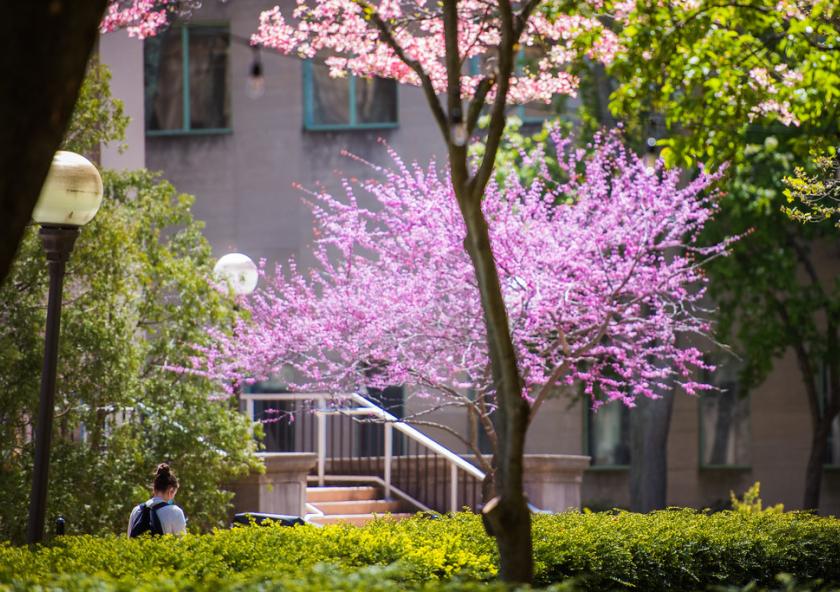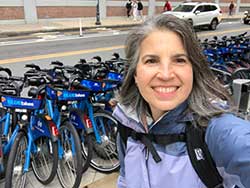
Behind the Climate Action Plan: Laura Tenny, Senior Campus Planner, Campus Planning

What is a typical day like for you at MIT?
The great thing about the work I do is that it varies a lot. Some days I’m on campus having a series of site meetings. For instance, we recently installed the first pedestrian wayfinding sign in the MIT/Kendall Square Open Space. I was on site in the morning observing that installation which was the result of more than three years of work on a wayfinding signage system for a campus that had virtually none before. To be able to see the first sign go in was amazing and gratifying. My work has a lot to do with providing continuity across projects that involve the planning, design, and construction of campus open space. I see projects over the whole span of their lives from the first glimmer to installation and then watch their use over time. Other days I’m meeting with Ground Services, or looking with my OCP colleagues at accessible routes around campus. It ranges, but it’s a nice balance of looking at things outdoors on campus and collaborating through Zoom or in-person meetings.
What are some ways your work and team advance MIT's commitment to climate and sustainability and utilize the campus as a test bed for change?
Campus Planning teams up with the Office of Sustainability on projects often. The ways I most often personally interact on the climate plan is around stormwater management, green infrastructure, and urban forestry. For planning open space, Campus Planning looks at ways we can transform areas of campus to still accommodate many functions and better serve human and environmental health. For example, the North Corridor project (at MIT.nano) took what was a network of asphalt surface drives and made the whole thing into a sort of a sponge that soaks up stormwater, treats it, and reduces the amount of runoff going back in the storm drain. We revegetated the area with more than 100 trees and installed light colored paving to reduce heat island. We aim to do all of the site-specific things we can in campus redevelopment to support the urban tree canopy, holistically manage stormwater, reduce heat islands, and make beautiful and meaningful outdoor spaces for people. As another example, I served as MIT rep to the Cambridge Urban Forest Master Plan Task Force, the result of which was a report on how to grow and sustain the urban tree canopy while focusing on equity across the city.
What’s one thing you wish people knew about Campus Planning and how it keeps MIT running?
We in Campus Planning tend to take the long view, so when we’re working on projects or landscapes, we think about the campus scale, not just how it works for one building. We aim to look forward, so not thinking just about how something works for our campus today but over time, in terms of things like quality and durability of materials, or making flexible spaces that allow for many kinds of social gathering uses and can adapt over time. A lot of what I do is supporting the larger capital development projects. In OCP we are a real mix of disciplines—our team has two landscape architects, a couple of building architects, as well as planners, city and government liaisons, and our Facilities Information Systems team who are experts in mapping and campus signage — so within our small group we have a fairly broad and diverse set of training and skills that we bring to our work. Depending on what project needs are we can all come in with our different backgrounds to help solve particular problems at MIT.

